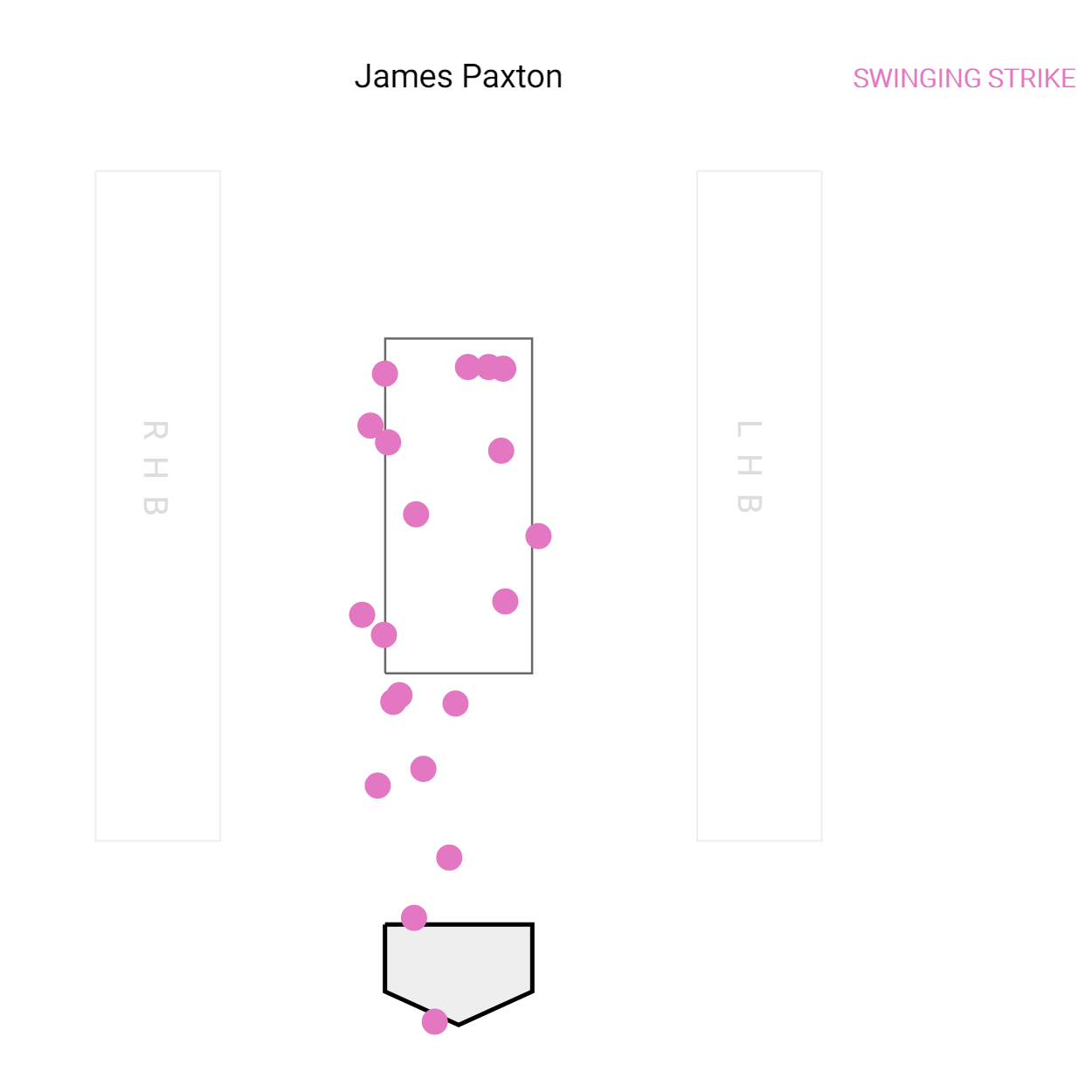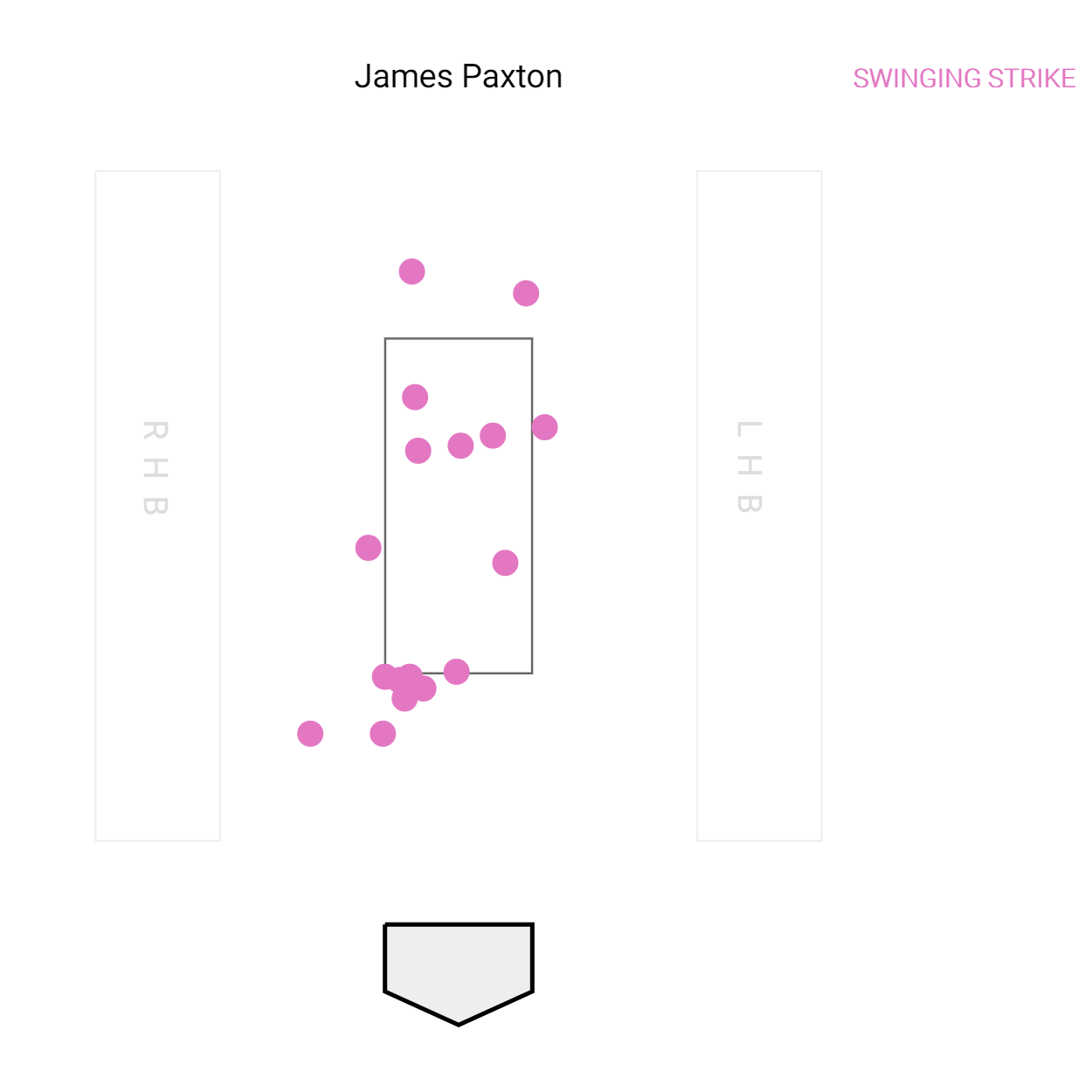James Paxton’s New Toy, Same As the Old Toy
We’ve written a lot about James Paxton here at FanGraphs, and deservingly so. The obvious reasoning is that Paxton is a very good pitcher. The intrigue builds once you consider that he throws hard, is a lefty, has thrown a no-hitter, and flaunts a lot of tools that just have the look of being very electric. In 2019, he also plays for the Yankees, which, whether you like it or not, means that he will be in the general media spotlight more.
In the past, Jeff Sullivan wrote several articles on Paxton’s explosive fastball and how he gets swinging strikes with it in the top of the zone. In terms of fastball usage, not a lot has changed. Paxton still throws pretty hard, and he uses his heat pretty frequently and gets whiffs with it. However, there’s always a room for improvement, even for pitcher who’s as good as Paxton is.
Paxton has struck batters out a lot this season. That is not a news. He’s always been a strikeout pitcher in his big league career. But after striking out 32.3% of the hitters he faced last year, his 2019 numbers are up to 36.2%. There was a concern over how Paxton, a fly ball pitcher, would adjust to the home run-friendly confines of Yankee Stadium, but we haven’t seen any problem yet; he’s posted a 0.78 HR/9 IP and 9.1% HR/FB rate so far. And he’s been one of the most valuable pitchers in all of the majors. As of May 2, his 1.5 WAR ranks third among all starters behind Max Scherzer and Matthew Boyd. All in all, he’s having a pretty good season. So what has led to the improvement?
Looking at his pitch usage, we don’t see a huge overhaul, but there is a notable change.
Last year, Paxton had a lot of fun with his three-pitch mix of fastball, cutter, and curveball. They all fared well. Here’s how effective they were, and how often he used them:
| Usage | xOBA | Spin Rate | |
|---|---|---|---|
| Fastball | 63.8% | 0.326 | 2283 |
| Curve | 21.5% | 0.274 | 1949 |
| Cutter | 14.3% | 0.181 | 2107 |
And here’s how it’s looked so far in 2019:
| Usage | xOBA | Spin Rate | |
|---|---|---|---|
| Fastball | 63.4% | 0.337 | 2314 |
| Curve | 13.3% | 0.211 | 2014 |
| Cutter | 23.2% | 0.209 | 2121 |
As you see, he was a heavy fastball guy in 2018 and he continues to be one in 2019. As far as the other two pitches, you should see a difference. He basically swapped the usage rates of his cut fastball and curveball. This might not be something that’s so complicated. It could be as simple as Paxton and the Yankees’ analytics department wanting to use more of the pitch that generated the lowest xOBA from his arsenal last year. It could be that Paxton found himself being more comfortable using the cutter down in the zone than dropping a curveball.
Paxton did use his cut fastball as a strikeout pitch last year – obviously less than his trademark high fastball, but it was there. If you know what his cutter looks like, it’s obvious why it can be such an effective tool. The pitch has about a 7 to 8 mph velocity difference from his fastball. That makes some believe that it’s more of a slider than cutter, but it’s been commonly classified as a cut fastball. At the same time, it has a ferocious bite that can miss many bats, just like a slider. He usually uses it low in the zone, which can give an effective eye-level change against the hitters.
For instance, here’s Paxton getting a whiff with his fastball on a 2-1 count versus Steve Pearce during his April 16 start.
On the next pitch, Paxton tries to locate inside, but the ball leaked out to the heart of the plate. Luckily, Pearce only managed to foul it off.
Paxton needed another shot to get Pearce out, so he buried a 91 mph cutter way low and in. Pearce is nowhere near close to making a contact and strikes out.
What becomes even more apparent about his cutter is that he has a very defined usage of it. Earlier in at-bats, when he’s battling for a better count or simply trying to get a hitter out, he’s used it to the lower part of the zone (rather than below the zone) to get ahead of the count or possibly induce a weak contact. Here’s how he used his cutter with a zero-strike count:

When it comes to a two-strike count though, it’s a different story. The pattern should be pretty obvious here:

Hypothetically, it would be reasonable for hitters to look for a cutter below the zone against Paxton with a two-strike count, but that’s simplifying things way too much. Remember, he also has very effective fastball and curveball. Here’s his swinging strikeout chart from said April 16 start vs. Boston:

And here’s the such chart in his next start vs. Kansas City, where he struck out 12 in six innings.

Paxton was getting whiffs with his cut fastball prior to this season. In 2019, he’s used that weapon even more.
Only time will tell how his adjustment fares for the rest of the season, but the early returns are promising. In 2018, James Paxton was very good; so far this season, he’s been even better.
Sung-Min Kim writes for River Ave. Blues, and has written for MLB.com, The Washington Post, Baseball America and VICE Sports. Besides baseball writing, he is also passionate about photojournalism and radio broadcasting. Follow him on Twitter @sung_minkim.
Shouldn’t the xOBA in the tables and referenced in the text be “xwOBA” or am i missing something?
EDIT: a lot of typos in this article. good article, but i got lost a little bit and had to re-read some parts.